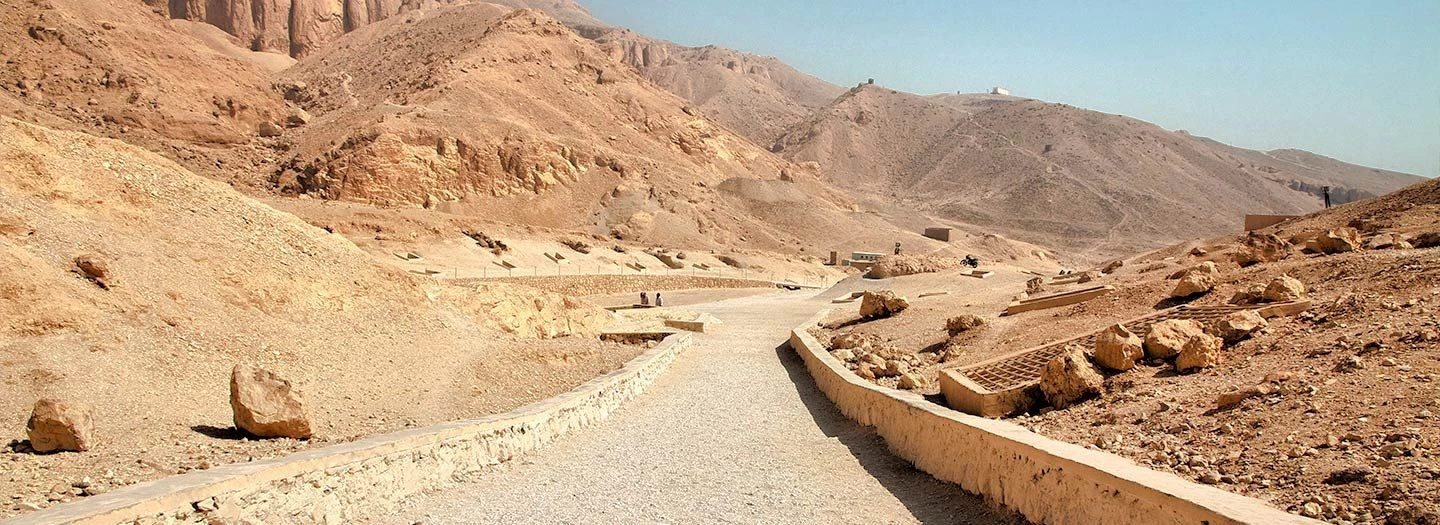


Positioned on the western bank of the Nile, the Valley of the Queens is a lesser-known among Egypt's hidden treasures, near the famous Valley of the Kings. This ancient mortuary temple was the resting place of queens, princesses, and royal children of the New Kingdom period. It is a place rich with all kinds of history and art, and must be on any Luxor day tour or day trip to Luxor itinerary.
The valley may stand in the shadow of its more famous neighbor, but the Valley of the Queen has great historical and cultural significance. The multicolored tombs, largely that of Queen Nefertari, are considered among the best examples of Egyptian tomb art. For tourists interested in Luxor attractions and ancient stories, this is one of the highlights among things to do in Luxor.
One of the most extraordinary things about the Valley of the Queens is the exquisite paintings that adorn the walls of the tomb chambers. The Tomb of Nefertari especially stands out for its brilliant colors and amazingly preserved hieroglyphs. Tourists regularly schedule an admiring visit in their private Luxor day tour to witness the art and symbolism that define every detail of this monument. No Luxor attractions can be more stunning than this one.
The paintings, meanwhile, give insightful revelations into the doctrine and practice of ancient Egypt, hence providing an education for the visitor during the day trip to Luxor. Contrasting with the tombs in the Valley of the Kings, which largely focus on pharaohs, the Valley of the Queens lends a more intimate perspective concerning royal family members and their afterlife journeys. It stands among those essential things to do in Luxor for those who want an enriching travel experience.
The Valley of the Queen was the primary site of usage during the 19th and 20th dynasties, with more than seventy tombs having been found to date. Its ancient name, Ta-Set-Neferu, means "The Place of Beauty," a fitting name for this tranquil desert valley. It is often combined with the temples and the Valley of the Kings in an ideal Luxor day tour. Learning the history here leaves visitors with a profound appreciation for Luxor attractions that fall off the beaten track.
What makes the Valley of the Queen so intriguing is its whole program of family and legacy. While the Valley of the Kings was all about kings, this place is all about queens and children, offering a broader perspective on royal Egyptian life. A private Luxor day tour lets one take this site in at the perfect pace and unravel the layers of meaning embedded in the tombs; this will surely enlighten all those who have the pleasure of adding it to a list of things to do in Luxor.
Due to conservation and restoration efforts, particular to Nefertari’s tomb Valley of the Queens has seen an increase in visitor numbers of late. These guided tours normally form part of a Luxor day tour, giving visitors the chance for visitors to dive into one of Egypt’s most visually spectacular burial sites. It's a tranquil alternative to some of the busier spots and therefore remains a secret wonder among Luxor attractions.
For those planning a day trip to Luxor, the addition of the Valley of the Queens will provide beauty and solitude. The experience is especially fulfilling on a private Luxor day tour, granting one time to truly absorb the space and contemplate the lives memorialized within. Without question, it ranks very highly among the most stunning things to do in Luxor.
Whether drawn by the brilliant colors of tomb art, finding royal history fascinating, or just looking for something different among Luxor attractions, the Valley of the Queens will take you on an unforgettable journey. Do add this to your private Luxor day tour or day trip to Luxor as a must-see of one of Egypt's grandest and most meaningful locations.

Copyright © 2024 All Rights Reserved
